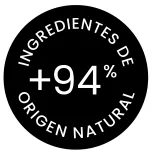OUR BRAND
COLLECTION CREATED BY EXPERT PERFUMERS






Victorio & Lucchino, after more than 25 years creating fragrances in the Spanish market, launches the collection of Aguas de Victorio & Lucchino. A collection of surprising Feminine and Masculine Waters that put two creative worlds in common: inspiration from Nature and good perfumer work.
The most select ingredients treated with artisanal extraction methods.
Victorio & Lucchino uses more than 94% natural ingredients in its fragrances and the company demonstrates its concern for sustainability with the use of FSC® -certified packs, which guarantee that the paper used in packaging comes from sustainably managed forests.
DID YOU KNOW THAT…
Origins

The word PERFUME comes from the Latin “per fumum” which means “through the smoke.” Perfumes were first made by burning herbs and aromatic resins to reach the gods. Containers that once held resins and perfumes have been found in Mesopotamia and date back more than 4,000 years.
The Process

The artisanal manufacturing process of our perfumes includes a maceration period to improve its stability and quality.
The art of perfumery is encompassed between music (we are talking about notes, chords, compositions) and sculpture due to its plastic form that we can imagine. We can think of a perfume or a scent and give it a color and even imagine a texture.
We can perceive a lemon scent as harsh, pointed, pungent, astringent, or that of a rose as velvety, mysterious, dark, red or maroon, just by smelling and imagining them.
Raw Materials

The raw materials used by a perfumer are called a “palette” and, like a painter, he combines them to create scents, uses their notes and combines them to create unique and exclusive chords.
The roses that are used in perfumery are mainly the Rosa Damascena and the Rosa Centifolia. It takes 6 tons of roses, picked by hand at dawn to have one kilogram of essence, while bergamot is a citrus from which 2,000 hand-picked fruits are needed to have one kilogram of essence.
There are perfumery ingredients whose price is several times that of gold.
Classification

Generally speaking, the industry classifies perfumes based on the essence that they contain in combination with alcohol and water.
We thus get:
- Eau de cologne, which contains between 2% and 4% essence. It is fresher and lighter, but also doesn’t last as long on the skin.
- Eau de toilette contains between 5% and 12% essence. It can be fresh or sophisticated, with an average duration of 6-8 hours on your skin.
- Eau de parfum contains between 12% and 20% essence. Sophisticated and intense, its high percentage of essence makes the perfume last more than 12 hours.
- Parfum or Extract contains an amount greater than 20% and in some cases up to 40%. Opulent and very intense, a single drop will last the entire day. It is applied mainly on the wrists and neck, the warmest areas on the body, so that the heat from the body makes the perfume evaporate.
Olfactory pyramid

Perfumery raw materials can be classified by their volatility and that allows us to have the Olfactory Pyramid.
- In the olfactory pyramid, the most volatile notes make up the Top Notes. The first thing that is perceived when putting on the perfume, with a duration of 10 to 30 min. Among the top notes we find: Citrus, Green, Fruity.
- Those with intermediate volatility are the Heart Notes. The notes and chords that we perceive when wearing the perfume between 30 min and 3 or 4 hours. Among the heart notes we find: Aromatic, Floral, Spicy.
- And the least volatile would be the Base Notes. They are the most opulent and long-lasting notes, and they are the ones you perceive when you wear the perfume on your skin for more than 5 or 6 hours. Among the base notes we find: Wood, Resins, Balsams, Musc / Musks / fixatives.



